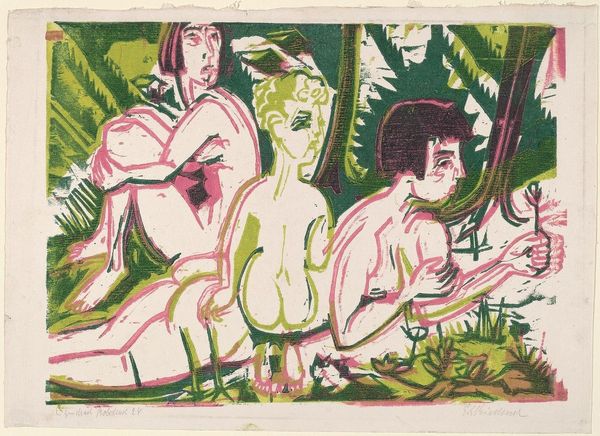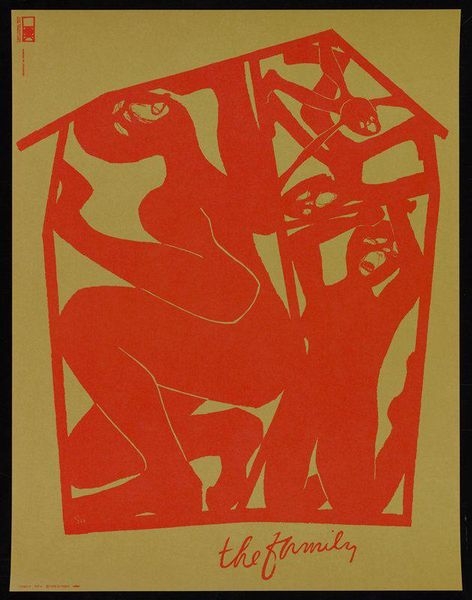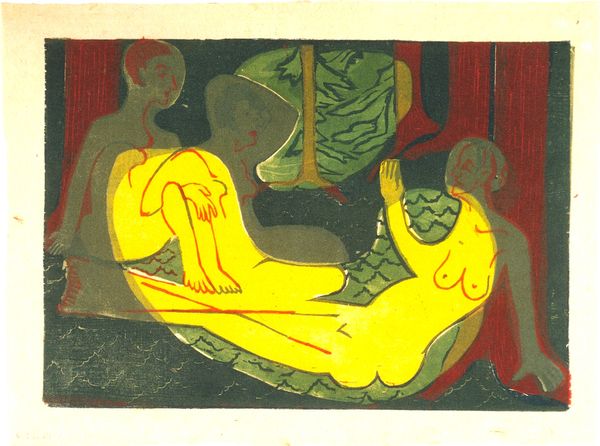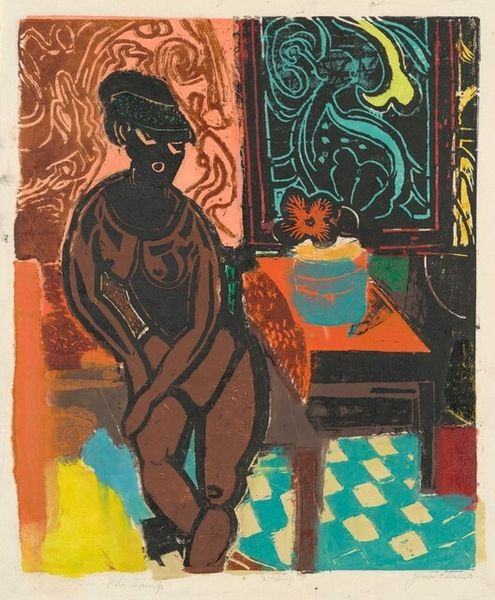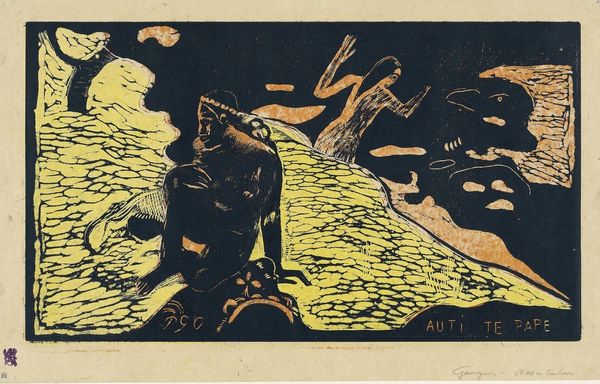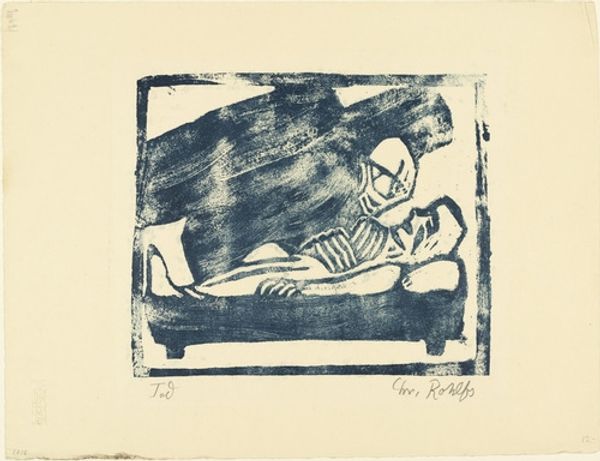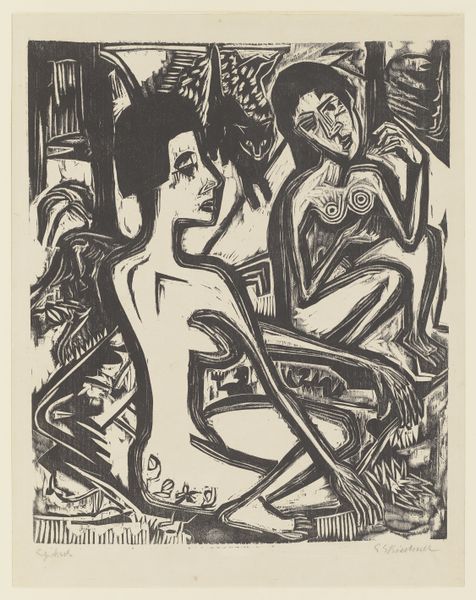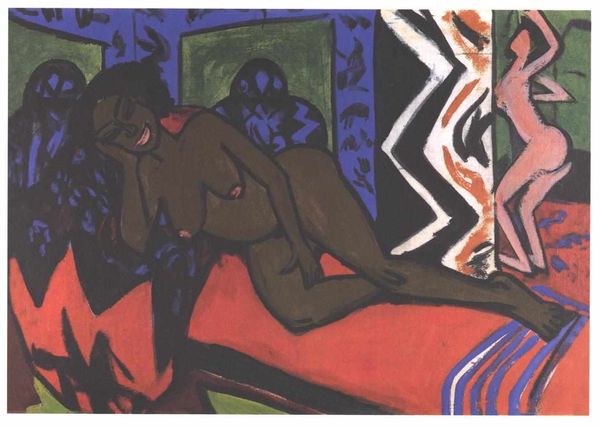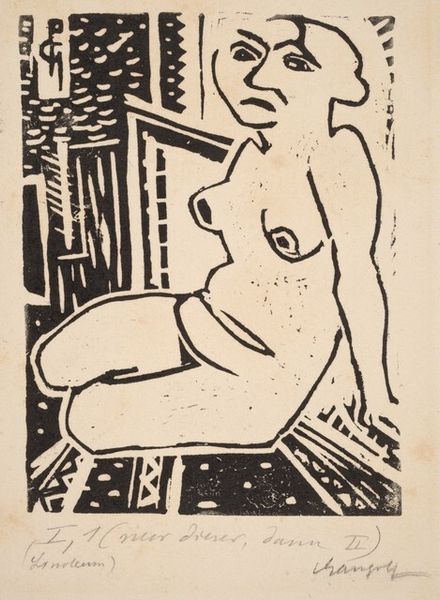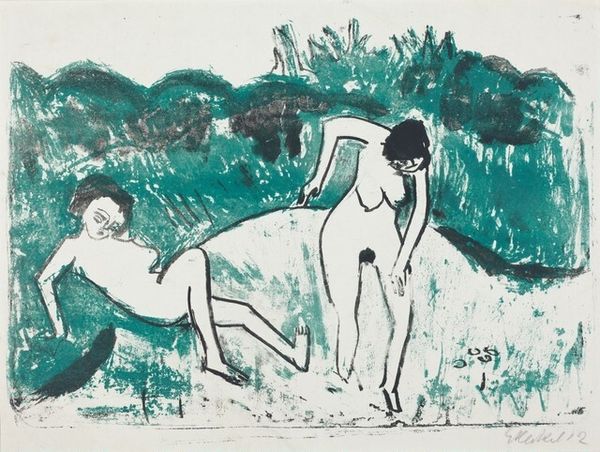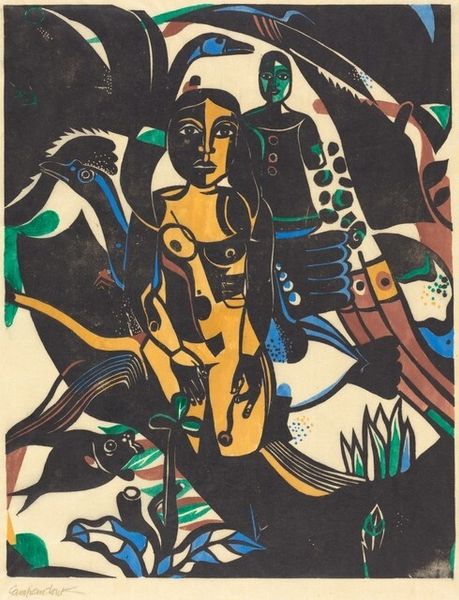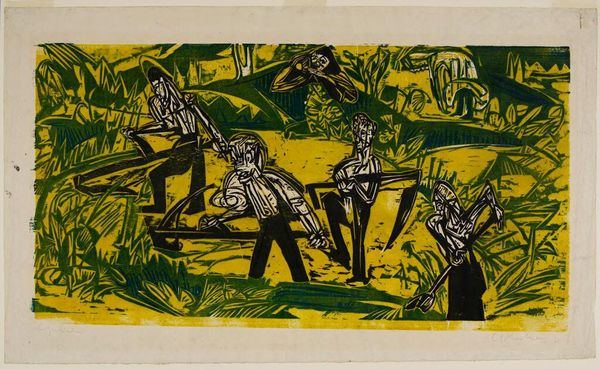
print, woodcut
#
african-art
#
narrative-art
# print
#
landscape
#
pop art
#
figuration
#
woodcut
#
erotic-art
Dimensions: image: 32.2 x 44.2 cm (12 11/16 x 17 3/8 in.) sheet: 43 x 57.5 cm (16 15/16 x 22 5/8 in.)
Copyright: National Gallery of Art: CC0 1.0
Editor: Here we have James Lesesne Wells's "African Nude," a 1980 woodcut print. I’m immediately struck by its bold color palette and how the shapes almost vibrate against each other. What's your take on this, considering it’s a print? Curator: Well, let's consider the woodcut medium itself. Wells wasn't just reproducing an image, but engaging in a process – the labor of carving, the inking, the pressure applied. How does this subtractive process, versus say painting, affect our understanding of “nude” and "African" as concepts being shaped by the very act of making? Editor: That's fascinating! So, the act of carving itself becomes part of the statement? It feels like he’s consciously choosing a more rudimentary method. Curator: Exactly! It distances the piece from academic traditions and, in a way, reconnects with the historical function of woodcuts - their origins lay in producing patterns for textiles, inexpensive religious images, and later book illustrations for the rising middle class. It also has some relation with pop art, with bold and defined masses and colors, a technique mostly used to produce printed material for large scale consumerism. Wells's work becomes an intriguing intersection of artistic intention, labor, material, and production possibilities. How does that impact our interpretation of it being a ‘nude’ artwork? Editor: So, we're not just seeing the subject matter, but also considering the artistic choices behind how it was created. It highlights how artistic labor and accessible materials interact to convey cultural meanings, shifting from high art toward craft tradition. Curator: Precisely. And considering his roots within the Harlem Renaissance, and the social and cultural importance of the African-American identity, how the African nude it represented using those techniques reinforce, reject or challenge social constructions of identity in that specific context. Editor: This perspective adds so many layers to how I see this work. Thank you. Curator: Absolutely, looking at process can unveil new understandings, always.
Comments
No comments
Be the first to comment and join the conversation on the ultimate creative platform.
